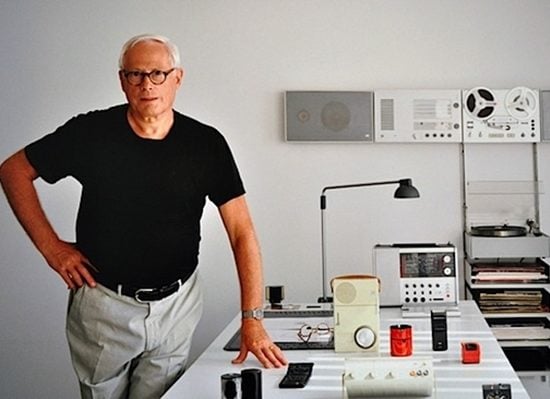Legendary German designer and pioneer of minimalist industrial design Dieter Rams‘s modus operandi is: “Less, but better.” Almost 60 years later, his words could not be more relevant.
You’ve probably come in contact with something Rams has designed during his four-decade-long tenure working for Braun, as well as his time spent creating furniture for British company Vitsoe. Among the many products he designed are Braun’s electric razor and blow-dyer, as well as the company’s iconic calculator. For Vitsoe, his modular 606 Universal Shelving System designed in 1960 is still widely popular today and has an infinite number of combinations to fit into any desired space. At last year’s (RED) Auction at Sotheby’s, there were three Rams-designed pieces up for grabs: a two-seat sofa, a signed 606 shelving system, and a vintage stereo system that sold for $100,000—way past its $10–15,000 estimate.
For those who want to live the complete Dieter Rams lifestyle, T Magazine recently asked the the 82-year-old designer what makes him tick and what’s in his art collection. Rams’s hobby is collecting Bonsai trees, of which he has a wide array in his Japanese-style garden at home. The first musician he listen to on his TP1 portable radio was Miles Davis. The Museum of Modern Art owns 24 Rams-designed products. He has designed and co-designed 514 product in total for Braun. His Braun T3 pocket radio, designed in 1958, is strikingly similar to the original Apple iPod designed in 2001. And the only thing he likes in abundance is “Oysters in Grand Central Station.”
But what art does the designer collect? The paintings of German artist C.O. Paeffgen and the sculptures of Dutch minimalist artist Jan Schoonhoven—unsurprisingly, very fitting to his aesthetic.
Although many of his designs are out of most admirers’ price range, Dieter Rams’s mega-fans and design buffs can still live by his principles, or “10 commandments” for good design:
1. Good design is innovative.
2. Good design makes a product useful.
3. Good design is aesthetic.
4. Good design makes a product understandable.
5. Good design is unobtrusive.
6. Good design is honest.
7. Good design is long-lasting.
8. Good design is thorough down to the last detail.
9. Good design is environmentally friendly.
10. Good design is as little design as possible.
